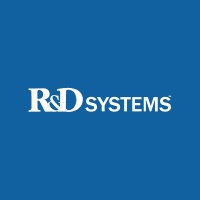TNF Receptor I Monoclonal / Alexa Fluor 700 / 16803R
Product Details
| Description | Human TNF RI/TNFRSF1A Alexa Fluor 700-conjugated Antibody | |
|---|---|---|
| Conjugate | Alexa Fluor 700 | |
| Clone | 16803R | |
| Target Species | Human | |
| Applications | FC | |
| Supplier | R&D Systems | |
| Catalog # | Sign in to view product details, citations, and spectra | |
| Size | ||
| Price | ||
| Antigen | ||
| Host | ||
| Isotype |
About TNF Receptor I
This gene encodes a member of the TNF receptor superfamily of proteins. The encoded receptor is found in membrane-bound and soluble forms that interact with membrane-bound and soluble forms, respectively, of its ligand, tumor necrosis factor alpha. Binding of membrane-bound tumor necrosis factor alpha to the membrane-bound receptor induces receptor trimerization and activation, which plays a role in cell survival, apoptosis, and inflammation. Proteolytic processing of the encoded receptor results in release of the soluble form of the receptor, which can interact with free tumor necrosis factor alpha to inhibit inflammation. Mutations in this gene underlie tumor necrosis factor receptor-associated periodic syndrome (TRAPS), characterized by fever, abdominal pain and other features. Mutations in this gene may also be associated with multiple sclerosis in human patients. [provided by RefSeq, Sep 2016]
This gene encodes a member of the TNF receptor superfamily of proteins. The encoded receptor is found in membrane-bound and soluble forms that interact with membrane-bound and soluble forms, respectively, of its ligand, tumor necrosis factor alpha. Binding of membrane-bound tumor necrosis factor alpha to the membrane-bound receptor induces receptor trimerization and activation, which plays a role in cell survival, apoptosis, and inflammation. Proteolytic processing of the encoded receptor results in release of the soluble form of the receptor, which can interact with free tumor necrosis factor alpha to inhibit inflammation. Mutations in this gene underlie tumor necrosis factor receptor-associated periodic syndrome (TRAPS), characterized by fever, abdominal pain and other features. Mutations in this gene may also be associated with multiple sclerosis in human patients. [provided by RefSeq, Sep 2016]
About Alexa Fluor 700
Alexa Fluor™ 700 (AF700, Alexa 700) has an excitation peak at 702 nm and an emission peak at 723 nm, and is spectrally similar to iFluor® 680 (ATT Bioquest) and iFluor® 700 (ATT Bioquest). Alexa 700 is commonly used in Flow Cytometry and is similar in size, brightness and application to iFluor® 700 and Vio® R720.
Alexa Fluor™ 700 (AF700, Alexa 700) has an excitation peak at 702 nm and an emission peak at 723 nm, and is spectrally similar to iFluor® 680 (ATT Bioquest) and iFluor® 700 (ATT Bioquest). Alexa 700 is commonly used in Flow Cytometry and is similar in size, brightness and application to iFluor® 700 and Vio® R720.
Experiment Design Tools
Panel Builders
Looking to design a Microscopy or Flow Cytometry experiment?
Validation References
Reviews & Ratings
| Reviews |
|---|
Looking for more options?
870 TNF Receptor I antibodies from over 34 suppliers available with over 58 conjugates.





